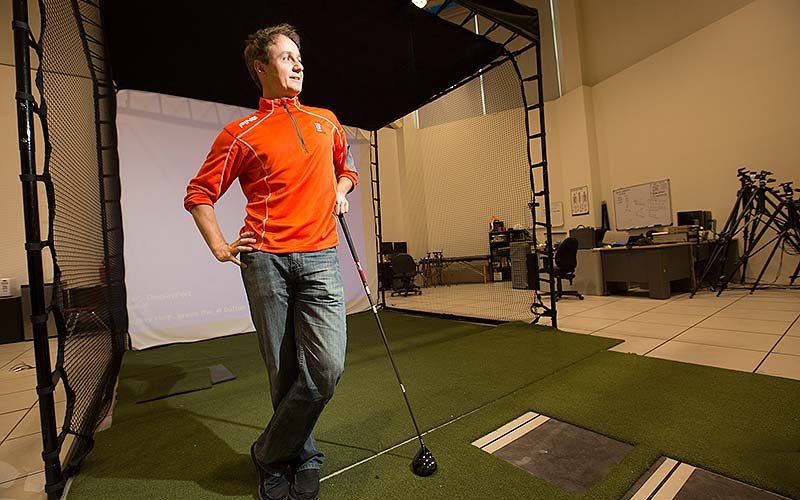
Cal State Fullerton’s golf biomechanics researcher Scott K. Lynn, who has worked with some of the top golfers and coaches in the world, has the ultimate goal of improving performance and preventing injuries in golfers of all levels.
Lynn’s work with golfers is part of an upcoming Discovery Channel Canada’s “Daily Planet” series focusing on the “most groundbreaking golf research and technology.”
Former Titan golfers, alumnus and kinesiology major Mark Anguiano, who turned pro in 2014 after his senior year, and alumna Tisha Abrea ’15 (B.A. communications-journalism), are featured in a “Daily Planet” segment discussing how these aspiring young golfers are using the technology in the biomechanics lab to help them reach their goals of making it to the top levels of professional golf — such as the PGA and LPGA tours.
“The goal of this research is to allow all people who play golf to enjoy this game much longer,” said Lynn, associate professor of kinesiology, who conducts his research out of the College of Health and Human Development’s Biomechanics Laboratory.
For his golf research, Lynn uses a state-of-the-art laboratory — housed in the Kinesiology and Health Sciences Building — that is equipped with biomechanic instruments to help golfers develop better golf swings, a nine-camera motion-capture system, two force plates embedded in the ground, a pressure plate, a portable indoor-outdoor launch monitor that measures club and ball impact conditions, and a golf simulator.
For example, walking 18 holes of golf consistently exceeds the 10,000 steps per day generally recommended as part of our daily physical activity requirements.
“There aren’t many sports that you can play from the time you’re very young until you are very old, so the potential of this game in keeping people active and healthy throughout their lifespans is tremendous.”
It’s estimated that there are approximately 55 million golfers worldwide, although participation rates have been decreasing recently. However, with the inclusion of golf as an Olympic sport in the upcoming 2016 Summer Games, Lynn believes there will be a surge in the number of people taking up the game.
“If participation rates do, in fact, increase, it will be important to develop better instructional techniques so that those who golf have a better chance of improving and staying healthy. This will allow golfers to continue to play throughout their lives,” he said. “Having more people golfing and reaping the associated benefits could have many positive effects.”
In addition to helping golfers stay healthy and reach the top of their game, Lynn also is currently working with the players and coaches of the National Hockey League’s Anaheim Ducks. In the fall, through the college’s Center for Sports Performance — housed in the Kinesiology Department — he conducted preseason fitness assessments for players, and worked with the team’s strength and conditioning coach to develop corrective exercise programs for each athlete.
“We are now working out the details of a new partnership that would expand our role with the Ducks moving forward,” he said.